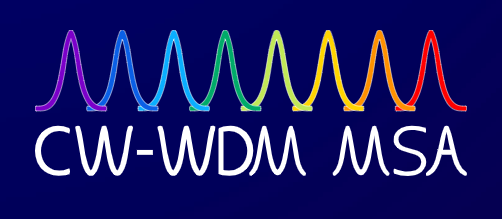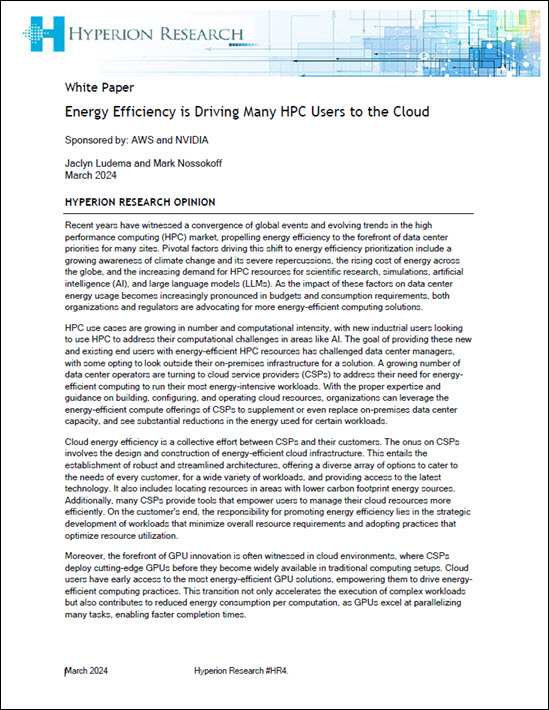More than 20 companies have joined an industry consortium to establish specifications for multi-wavelength integrated optics – the emerging interconnect technology whose advocates say is critical to next-generation HPC and AI.
 Announced today, the CW-WDM MSA (Continuous-Wave Wavelength Division Multiplexing Multi-Source Agreement) Group, wants to build an ecosystem to work on common standards and interoperability for dense laser light sources, which in turn will enable broad adoption of optical I/O.
Announced today, the CW-WDM MSA (Continuous-Wave Wavelength Division Multiplexing Multi-Source Agreement) Group, wants to build an ecosystem to work on common standards and interoperability for dense laser light sources, which in turn will enable broad adoption of optical I/O.
Adoption of practical optical interconnects will be integral to the supercomputers of the future, according to Matt Leininger, senior principal HPC strategist, Advanced Technology Office, Lawrence Livermore National Laboratory. “We know what technologies are necessary for the first and second generation of exascale platforms in the 2022 to 2023 timeframe,” he said, “but after that a crossover to optical I/O-based solutions will be needed.”
In its announcement today, the consortium said, “Emerging advanced integrated optics applications, such as silicon photonics (SiPh)-based high-density co-packaged optics, optical computing, and AI, are expected to move to 8, 16, and 32 wavelengths. Standardizing higher wavelength counts is a crucial part of an emerging ecosystem that is enabling a leap in efficiency, cost, and bandwidth scaling compared to current technology. Increasing the number of wavelengths, while staying in the O-band and aligning with ITU and IEEE standards, allows developers and suppliers to leverage their strategic investments in the current generation of optical products to accelerate time to market of next generation products.”
“Promoter” members of the consortium include Arista Networks, Ayar Labs, CST Global, imec, Intel, Lumentum, Luminous Computing, MACOM, Quintessent, Sumitomo Electric and II-VI. “Observer” members, briefed on the standard to enable early technology development, include AMF, Axalume, Broadcom, Coherent Solutions, Furukawa Electric, GlobalFoundries, Keysight Technologies, NeoPhotonics, NVIDIA, Samtec, Scintil Photonics and Tektronix.
“We know what technologies are necessary for the first and second generation of exascale platforms in the 2022 to 2023 timeframe, but after that a crossover to optical I/O-based solutions will be needed.” – Matt Leininger, Lawrence Livermore National Laboratory
“Cost-effective, multi-wavelength WDM links are poised to enable very high bandwidth interfaces that can address the increased global bandwidth requirement,” said Jessen Wehrwein, VP of corporate marketing, MACOM. “CW laser source along with silicon photonics can lead to co-packaged optics that are energy efficient and lower in cost and more scalable than discrete components.”
The CW-WDM MSA said it is different from optical communication standards groups in that it is focused on specifying the laser source, instead of the full communications link, and is not targeted at any specific application. This allows developers to optimize optics to their customers’ requirements without interoperability constraints while creating a large business opportunity for laser source suppliers, according to the consortium.
“Laser sources have been the critical building block of fiber optic communications, and standardizing their specifications has been key to the success of telecom and datacom optics,” said Chris Cole, consortium chair and VP, systems engineering at Luminous Computing. “ITU-T established complete baselines for DWDM and CWDM grids. The IEEE then specified subsets of these grids for high volume data center applications, starting with 40G and 100G Ethernet optics. The CW-WDM MSA will similarly leverage ITU-T and IEEE standards to specify 8, 16 and 32 wavelength grids in O-band for emerging advanced datacom and computing optics. With the definition of multiple grid sets, the MSA will enable developers to choose what is optimum for their application, while allowing laser suppliers to only have to invest in one technology platform.”



